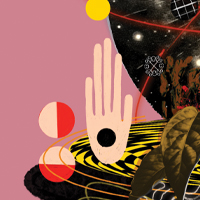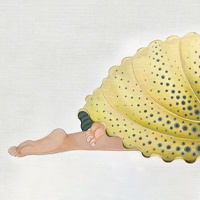
Attachment theory through the lens of social neuroscience
“The propensity to make strong emotional bonds to particular individuals is a basic component of human nature.” —John Bowlby
Attachment is a word that seems to be on everyone’s lips these days, especially on social media, where it comes up in association with relationships, parenting, mental health, and more. As a social neuroscientist who has studied human attachment for almost two decades, I notice how the discussions online, encompassing a wide range of perspectives, often result in disagreement and confusion. I also see how exploring attachment through the combined lenses of psychology and social neuroscience offers a clarifying and unifying path forward. Such a framework helps to unravel the neuropsychological basis of our fundamental social nature.
Attachment Theory
Human infants, as compared to other mammals, are born early and helpless. They cannot survive without constant, intensive care. Put differently, infants strongly rely on external coregulation—help from others to maintain physical and mental balance (homeostasis) and to successfully predict and respond to constantly changing environmental demands (allostasis). What is more, infants’ dependence on social closeness and protection lasts much longer than in other mammals due to a vastly prolonged developmental period. Evolution has therefore equipped infants with sophisticated social survival tools. These tools function to ensure that infants can signal when they need support and that their signals reliably elicit an immediate and appropriate caregiving response.
Starting in the 1950s, John Bowlby and Mary Ainsworth were the first to recognize and systematically explore the above mechanisms by developing attachment theory. At the core of their research and theorizing was the realization that—because all infants need to develop strong, enduring emotional bonds to significant others for survival—it is not the presence versus absence or the “strength” of attachment that is most important. What counts above all is the quality of the infant-caregiver attachment and how it varies between different infant-caregiver pairs.
Another key ingredient of attachment theory is the notion that infants will start forming expectations and predictions about future social interactions based on past interactions with their caregivers. Here, two aspects are of particular importance: how much effort it takes to elicit a caregiving response and how efficient the caregiving response is in alleviating distress. Accordingly, a high-quality infant-caregiver interaction requires little effort from the infant to elicit care and is very effective in helping the infant with allostasis and thereby restoring homeostasis. That is why support seeking under distress is deemed the primary attachment strategy associated with a secure attachment pattern. Finally, attachment theory assumes that the above considerations can be extended from infants to children, adolescents, and adults, as the need for coregulation under distress remains a prominent hallmark of our species across the entire lifespan.
How Does Social Neuroscience Fit In?
Social neuroscience is the study of the neurobiology underlying human social behavior. It can shed light on the neuropsychological basis of our strong dependence on social closeness and care to maintain homeostasis and perform allostasis. There is growing evidence that our brain treats our own resources and the resources provided by others almost interchangeably. The less we have to worry and the more helping hands—literally as well as figuratively speaking—we have available when we are in need, the more energy we can conserve. We can then use this energy for other activities like exploration, learning, and self-care. It therefore makes perfect sense to ensure close social connection to others and seek their help and support when facing a challenge.
Social neuroscience can also help explain what happens if our social resources are reduced or when it becomes difficult for us to reliably predict their availability under distress—in other words, if our primary attachment strategy associated with secure attachment becomes increasingly futile and inefficient. Because we are still in need of coregulation to perform allostasis, we must come up with compensation strategies.
One strategy, called “individual fight,” aims at increasing our own physical and mental resources to face challenges independently. If nobody is there to help us, we need to fend for ourselves. In attachment terms, we start employing a secondary attachment strategy related to avoidance and attachment system deactivation. Another strategy, “social flight,” aims at socially reconnecting to others by increasing our support-seeking attempts and thus the chances of our cries for help being heard. In attachment terms, we employ a secondary attachment strategy linked to anxiety and attachment system hyperactivation.
Crucially, both avoidant and anxious secondary attachment strategies are meaningful and often necessary as they represent adaptive responses to specific environmental demands. And they usually work quite efficiently, especially to resolve short-term increased allostatic demands under moderate distress. We should therefore not regard these two insecure attachment strategies as bad or dysfunctional as such. That said, prolonged or intensive use of compensation strategies inevitably leads to wear and tear and thus constitutes a prominent risk factor for the emergence of physical and mental health issues.
Social neuroscience can also illustrate what happens if we experience a complete lack of social resources or if they become a threat by themselves. This usually happens when we face prolonged adversity associated with a diverse range of socioeconomic stressors (including poverty, parental mental health issues or substance abuse, etc.) or repeated experiences of neglect or maltreatment. It yields what we call “tertiary disorganized strategies” with two main neurobiological fingerprints.
On the one hand, prolonged unavailability of others for coregulation and allostasis will give rise to a pattern of hypo-arousal and emotional blunting, because the cost of constant, intensive self-regulation eventually becomes unsustainable. On the other hand, repeated maltreatment will result in a pattern of hyper-arousal characterized by increased emotional sensitivity. We link this pattern with an often-observed approach-avoidance conflict due to the maltreating caregivers’ dual role of providing both care and being a source of threat. Since these tertiary disorganized strategies are much more rigid and extreme, they also bear a much larger potential for allostatic overload and ensuing physical and mental health issues.
A Unifying Framework
How then can a combined psychology and social neuroscience framework help to resolve confusion and unify perspectives on attachment? I believe the crucial element is the addition of objective neurobiological data. If a consistent neurobiological pattern emerges across studies that employed different attachment measures, the overlapping social neuroscience component can help find common denominators. This will also clarify definitions and technical meanings of attachment terms that vary considerably depending on the psychology tradition and research method they were initially derived from.
We can also compare objective neurobiological data pertaining to attachment with corresponding findings from other social neuroscience domains and check for overlaps. For example, the above-delineated framework draws on Social Baseline Theory as well as other considerations associated with the neurobiological basis of social, emotional, and cognitive information processing and social allostasis. Such comparisons show that attachment shares many properties with other vital neuropsychological functions and that research and theory pertaining to these other functions can fruitfully inform and extend our knowledge about attachment.
We still have a lot to learn about attachment. But taking a combined psychology and social neuroscience perspective offers many pathways to better understand ourselves as individuals and as a species that is ultimately reliant on one another.
References
Long, M., Verbeke, W., Ein-Dor, T., and Vrtička, P. “A Functional Neuro-Anatomical Model of Human Attachment (NAMA): Insights from First- and Second-Person Social Neuroscience.” Cortex 126 (2020): 281–321.
White, L. O. et al. “Conceptual Analysis: A Social Neuroscience Approach to Interpersonal Interaction in the Context of Disruption and Disorganization of Attachment (NAMDA).” Frontiers in Psychiatry 11 (2020).
White, L., Kungl, M., and Vrtička, P. “Charting the Social Neuroscience of Human Attachment (SoNeAt).” Attachment and Human Development 25 (2023): 1–18.
About the Contributor
Dr. Pascal Vrtička is an associate professor and principal investigator of the Social Neuroscience of Human Attachment (SoNeAt) Lab at the University of Essex in Colchester, United Kingdom. In addition, he acts as coordinating board president of the special interest research group Social Neuroscience of Human Attachment (SIRG SoNeAt) situated within the Society for Emotion and Attachment Studies (SEAS), where he also is an associate member of the executive board. Learn more about his work at pvrticka.com.
Image Credit
Anuj Shrestha is an illustrator and cartoonist currently living in Philadelphia, PA. His illustration work has appeared in the New York Times, New Yorker, Washington Post, ProPublica, and Playboy, among others. His comics have received gold medals from The Society of Illustrators. He is fond of Italian horror movies, dumplings with chili oil, and chihuahuas.





